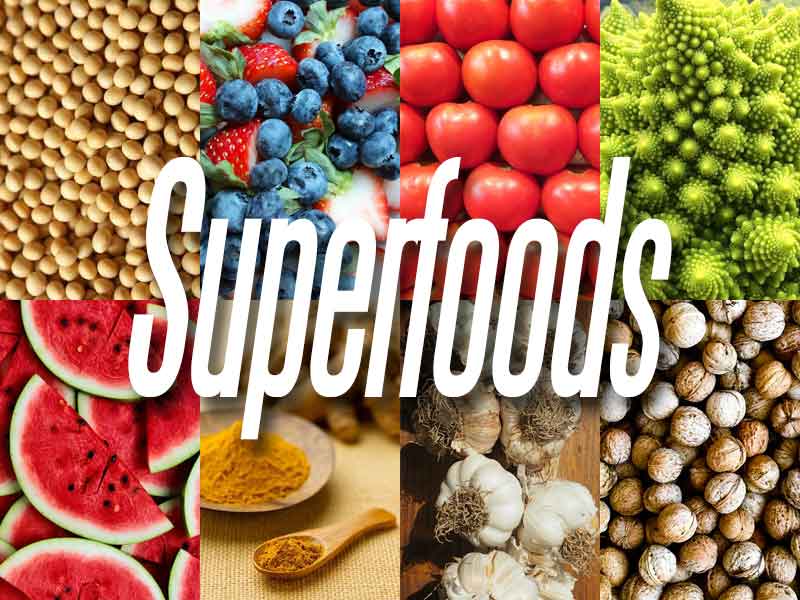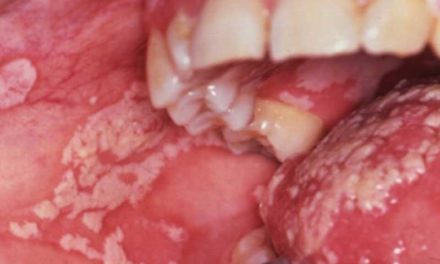Cancer seems to be the disease of the century. What we eat is more important than we think when it comes to preventing it. Our diet can be one of the most important allies in the fight against cancer.
What is Cancer?
According to the American Cancer Society, cancer is ‘a group of diseases characterized by the uncontrolled growth and spread of abnormal cells’. There are various treatments aimed at controlling the proliferation of these cells, including surgery, chemotherapy, hormone therapy, immune therapy, radiation, and targeted therapy (drugs that target cancer cell proliferation).
In broad lines, cancer is caused, on the one hand, by external factors, such as an unhealthy diet, UV radiation, smoking tobacco, alcohol consumption, or coming in contact with infectious organisms, and, on the other hand, by internal factors, such as inherited genetic mutations, hormones, and immune conditions. External and internal factors usually concur. However, a considerable number of cancers can be prevented. The World Cancer Research Fund estimates that about 20 percent of all cancers diagnosed in the U.S. are partly caused by body fatness, a sedentary lifestyle, excess alcohol consumption, and/or poor diet and are thus preventable. Regular screening, especially if there have been cases of cancer in the family, can also help monitor and diagnose diseases in early stages.
Cancer Facts in the U.S.
About 14.5 million Americans had been diagnosed with cancer at a certain point in their life and were still alive in January 2014. The incidence of cancer is higher in older people. 86 percent of all cancers in the United States are diagnosed in people 50 years of age or older. The highest incidence rates are in black males. For American men, the average lifetime risk of developing cancer is one in two, or 42 percent, and one in three, or 38 percent, for females.
It is estimated that almost 1.7 million new cases of cancer will be diagnosed in 2016. Males are most likely to develop prostate cancer (21 percent), followed by lung (14 percent) and colorectal (8 percent) cancers. Among females, breast (29 percent), lung (13 percent), and colorectal (8 percent) cancers take the lead. The Agency for Healthcare Research and Quality estimates that the direct medical costs for cancer in the U.S. in 2013 amounted to $74.8 billion.
Cancer is the second most common cause of death in the U.S., after heart disease, and accounts for nearly 1 in 4 deaths. In 2016, lung cancer is estimated to be the leading cause of cancer death among males (27 percent), followed by prostate (8 percent) and colorectal (8 percent) cancers. Among females, the most common causes are lung (26 percent), breast (14 percent), and colorectal (8 percent) cancers.
Healthy Habits
A healthy diet, paired with regular exercise, go a long way.
- Try to eat at least five to nine servings of fruits and vegetables a day.
- Avoid food high in saturated fat and processed and grilled meats. Some studies have linked eating large quantities of processed meat to increased risk of stomach and colorectal cancers. Microwave, bake, steam or poach your meat as studies have shown that exposing meats to direct flame, high heat and smoke like when grilling or barbecuing can cause the formation of cancer-inducing substances called carcinogens.
- Limit your alcohol intake to no more than 2 drinks per day if you are a man and 1 drink per day if you are a woman. Alcohol raises the risk of cancers of the mouth, larynx, pharynx, breast, esophagus, liver, and the colon and rectum.
- Avoid salt-cured or pickled foods as there is enough evidence that these carry an increased risk of stomach, throat, and nasopharyngeal cancers.
- Don’t be afraid to use artificial sweeteners instead of sugar. Research on artificial sweeteners concluded that there is no clear evidence that they are associated with cancer risk in humans.
- Don’t overspend on organic food unless you can afford it as organic foods do not have any proven results for cancer prevention. Healthy is often associated with organic, but studies showed that foods grown by conventional farming techniques did not present any particular risk of developing cancer because the pesticide levels are in negligible amounts.
- Get your vitamins in nutrients from food rather than supplements for protection against cancer as supplements don’t have clinically proven results.
- Be physically active for at least 30 minutes every day. Keeping a healthy weight through regular physical activity can help reduce the risk of various types of cancer, such as breast (among postmenopausal women), esophagus, colon and rectum, endometrium, kidney, and pancreas. Avoiding the extra pounds can also probably help prevent the risk of gallbladder cancer. Obesity may also be linked with increased risk of cancers of the cervix, ovary, liver, multiple myelomas, and prostate cancer.
If at risk to develop a particular type of cancer, healthy personal habits other than those concerning diet and physical exercise are needed. For example, in the case of skin cancer, exposure to ultraviolet (UV) radiation from the sun, sunlamps, and tanning booths should be limited. Wearing sunscreen, avoiding exposure between mid-morning to late afternoon are all healthy habits.
The relationship between cancer and specific types of foods is tough to assess because our diets are so diverse and include so many different nutrients and chemicals. Moreover, there are lifestyle factors that could also play a significant role, like smoking or physical activity, which are harder to track in studies. There are also genetic factors, for example the risk increases if a family member had cancer. Studies usually compare the diets of people with and without cancer and focus on a particular dietary component. However, the dietary component is only associated with a change in cancer risk, but might not be responsible for, or cause, the change in risk. For these reasons, the research results are more often than not inconclusive.
No single food or food component is guaranteed to protect you against cancer on its own fully. However, there is substantial evidence that a diet filled with a variety of vegetables, fruits, whole grains and beans helps lower risk for many cancers. The American Cancer Institute for Research recommends filling at least 2/3 of your plate with plant foods, preferably of different colors as the color is often a sign of the individual compounds in each food. Here are some specific examples of what to make sure you don’t leave out of your diet based on existing research findings.
Antioxidants
The body uses antioxidants to protect against damage resulting from normal metabolism, which is also linked to increased cancer risk. Antioxidants include vitamin C, vitamin E, carotenoids (such as beta-carotene and vitamin A), and many other chemicals from plants called phytochemicals. Vitamin C has been found to lower the risk of cancer. It is found in many vegetables and fruits, mainly grapefruits, oranges, and peppers. Selenium is a mineral with antioxidant properties that has been suggested to reduce the risk of lung, colon, and prostate cancer in humans. It is found in Brazil nuts, yellowfin tuna, halibut, sardines, beef, turkey, boneless, chicken and spinach.
Studies suggest that eating more vegetables and fruits, which are rich in antioxidants, may lower cancer risk. But this does not necessarily mean that it is the antioxidants that are responsible for cancer prevention, as these foods also contain many other compounds. To reduce cancer risk, it is advised to get antioxidants from food rather than supplements as the results of the latter are not backed by scientific evidence. Unfortunately, the pill that contains the nutritional equivalent of vegetables and fruits hasn’t been invented yet, especially that there are many compounds in whole foods that are yet unknown.
Folate-rich Foods
Folate is a water-soluble B vitamin. Folate also plays a vital role in DNA repair. It’s easy to incorporate such foods in your diet, as folate is found in orange juice, liver, most cereals, spinach or romaine leaves, poultry, dried beans or peas, peanuts, asparagus and Brussels sprouts. Since 1998, enriched grain products in the U.S. have been fortified with folic acid.
Several studies have suggested that folate can reduce the risk of lung, colorectal, esophageal, ovarian, breast, stomach, pancreatic, and cervical cancers.
Vitamin D
Vitamin D not only helps build stronger bones and teeth, but also fights cancer. Research shows that vitamin D slows down the growth of cancerous cells.
A report presented at the American Association for Cancer Research (AACR) showed that vitamin D intake reduced the risk of developing breast cancer by up to 50 percent.
According to a Harvard study published in 2005, vitamin D is also linked to higher survival rates among lung cancer patients of 56 percent over a five-year period compared to 23 percent with those with a lower vitamin D intake.
Vitamin D is found in milk, cod, shrimp, and eggs. And let’s not forget the sunshine. In just 10 minutes, by exposing 40 percent of your body to direct sunlight, without sunscreen, you can soak up about 5,000 IU of vitamin D.
Whole Grains
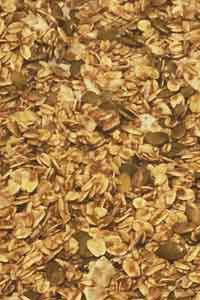 There has been conclusive evidence that foods containing dietary fiber, including whole grains, lower the risk of colorectal cancer. Each type of whole grain also contains a variety of phytochemicals, many being studied for their cancer-protective effects. There’s a wide range to choose from so you won’t get bored: corn, brown rice, oatmeal, whole-wheat bread, barley, bulgur, and more. Brown rice, oatmeal and other whole grains are also good sources of selenium, a mineral with antioxidant properties.
There has been conclusive evidence that foods containing dietary fiber, including whole grains, lower the risk of colorectal cancer. Each type of whole grain also contains a variety of phytochemicals, many being studied for their cancer-protective effects. There’s a wide range to choose from so you won’t get bored: corn, brown rice, oatmeal, whole-wheat bread, barley, bulgur, and more. Brown rice, oatmeal and other whole grains are also good sources of selenium, a mineral with antioxidant properties.
Whole grains are more nutritious, contain more fiber and health-promoting phytochemicals than refined grains. Fiber may lower cancer risk by diluting potential carcinogens and promoting the growth of beneficial bacteria. Whole grains may also help control weight within reasonable limits, which is imperative when being overweight increases the risk of nine cancers.
Cruciferous Vegetables
 All cruciferous veggies like cabbage, kale, broccoli, radish or cauliflower, are highly effective in the fight against cancer and they work best when chewed or cut rather than swallowed. Cruciferous vegetables are non-starchy vegetables that contain dietary fiber and carotenoids (including beta-carotene), which means that they convincingly lower the risk of colorectal cancer and they probably reduce the possibility of mouth, pharynx and larynx cancers.
All cruciferous veggies like cabbage, kale, broccoli, radish or cauliflower, are highly effective in the fight against cancer and they work best when chewed or cut rather than swallowed. Cruciferous vegetables are non-starchy vegetables that contain dietary fiber and carotenoids (including beta-carotene), which means that they convincingly lower the risk of colorectal cancer and they probably reduce the possibility of mouth, pharynx and larynx cancers.
What makes broccoli unique is the high amount of sulforaphane, a compound that increases the level of the body’s protective enzymes. A study conducted by the University of Michigan on mice found that sulforaphane also targets cancer stem cells that aid in tumor growth.
Broccoli helps fight skin, breast, lung, liver, prostate, bladder, and stomach cancers.
Berries
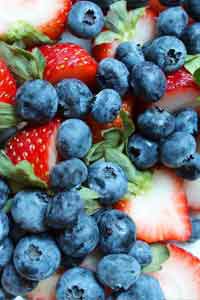 All berries contain cancer-fighting phytonutrients. Berries are good sources of vitamin C and fiber. Black raspberries, in particular, contain very high levels of phytochemicals called anthocyanins. Anthocyanins slow down the growth rate of premalignant cells and prevent new blood vessels from forming that could help cancerous tumors grow.
All berries contain cancer-fighting phytonutrients. Berries are good sources of vitamin C and fiber. Black raspberries, in particular, contain very high levels of phytochemicals called anthocyanins. Anthocyanins slow down the growth rate of premalignant cells and prevent new blood vessels from forming that could help cancerous tumors grow.
All berries, but especially strawberries and raspberries, have high levels of ellagic acid, which has been found can prevent cancers of the bladder, skin, lung, breast and esophagus. Ellagic acid acts as an antioxidant, it helps the body deactivate certain carcinogens and it slows down the proliferation of cancer cells.
Curcumin
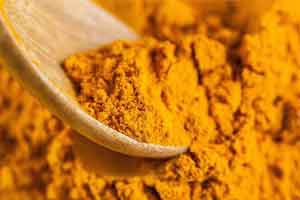 Curcumin is unique to Indian dishes as it is the main ingredient in curry powder. Research indicates that curcumin has anti-inflammatory properties and thus is useful in cancer treatment. Curcumin is believed to suppress the modification and reproduction of cancerous cells.
Curcumin is unique to Indian dishes as it is the main ingredient in curry powder. Research indicates that curcumin has anti-inflammatory properties and thus is useful in cancer treatment. Curcumin is believed to suppress the modification and reproduction of cancerous cells.
Walnuts
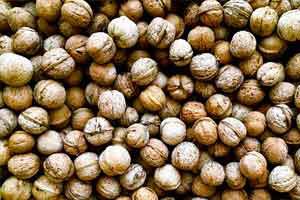 The phytosterols found in walnuts have been found to slow down the growth of breast cancer cells. Phytosterols are plant compounds that help lower cholesterol whose potential antioxidant and anti-inflammatory effects are currently being studied.
The phytosterols found in walnuts have been found to slow down the growth of breast cancer cells. Phytosterols are plant compounds that help lower cholesterol whose potential antioxidant and anti-inflammatory effects are currently being studied.
Walnuts help fight breast and prostate cancers.
Garlic
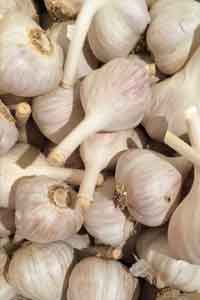 There is an indication that phytochemicals found in garlic reduce the formation of nitrosamines, carcinogens formed in the stomach and in the intestines when you consume nitrates, a common food preservative. The Iowa Women’s Health Study found that women who consumed garlic had a 50 percent lower risk of certain colon cancers than women who consumed less.
There is an indication that phytochemicals found in garlic reduce the formation of nitrosamines, carcinogens formed in the stomach and in the intestines when you consume nitrates, a common food preservative. The Iowa Women’s Health Study found that women who consumed garlic had a 50 percent lower risk of certain colon cancers than women who consumed less.
Laboratory research has found that one component called diallyl disulfide is quite potent in the prevention of cancers of the colon, skin and lung.
Garlic helps fight colon, esophageal, stomach, skin, lung and breast cancers.
Soy Products
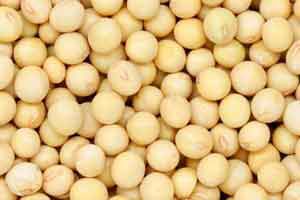 Soy contains several phytochemicals, including isoflavones, and may help protect against hormone-dependent cancers. There is growing evidence that traditional soy foods such as tofu may lower the risk of breast, prostate, or endometrium cancers, and there is some evidence regarding other types of cancers.
Soy contains several phytochemicals, including isoflavones, and may help protect against hormone-dependent cancers. There is growing evidence that traditional soy foods such as tofu may lower the risk of breast, prostate, or endometrium cancers, and there is some evidence regarding other types of cancers.
Ginger
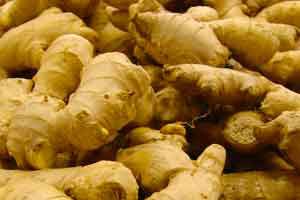 Studies of ginger’s effects on ovarian cancer cells have found that it kills cells either by making them commit suicide without harm to the surrounding cells or by digesting themselves. Ginger’s cancer-fighting effects have not yet been confirmed by research carried out on animals and humans.
Studies of ginger’s effects on ovarian cancer cells have found that it kills cells either by making them commit suicide without harm to the surrounding cells or by digesting themselves. Ginger’s cancer-fighting effects have not yet been confirmed by research carried out on animals and humans.
Tomatoes and Watermelon
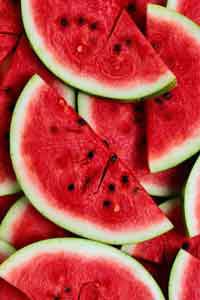 Tomatoes and watermelon are a great source of lycopene. Lycopene was found to stop endometrial cancer cell growth. Endometrial cancer accounts for nearly 8,000 deaths a year.
Tomatoes and watermelon are a great source of lycopene. Lycopene was found to stop endometrial cancer cell growth. Endometrial cancer accounts for nearly 8,000 deaths a year.
A 2007 report found substantial evidence that foods rich in lycopene protect against prostate cancer. However, due to new findings regarding the nature of prostate cancer, the link was not as evident and research was labeled as inconclusive due to limited evidence.
Lycopene helps fight endometrial, lung, stomach, breast and prostate cancers.
Green Tea
 Tea contains flavonoids, known for their antioxidant effects. Most research has focused on green tea because of its most active compound epigallocatechin gallate (EGCG). EGCG is a stronger antioxidant than vitamin C or E.
Tea contains flavonoids, known for their antioxidant effects. Most research has focused on green tea because of its most active compound epigallocatechin gallate (EGCG). EGCG is a stronger antioxidant than vitamin C or E.
Kaempferol is a flavonoid which has cancer-fighting abilities. A large-scale study on 66,000 women confirmed that kaempferol intake lowers the risk of getting ovarian cancer. You can reduce this risk by consuming four cups of tea a day, which contain enough kaempferol for the job.
The American Institute for Cancer Research concluded that there is not enough evidence to draw any conclusions about tea and cancer risk.
Many studies are underway, so make sure you keep up-to-date with the latest findings. In the meantime, eat healthy, but remember that no food in isolation can effectively prevent cancer.
Resources:

